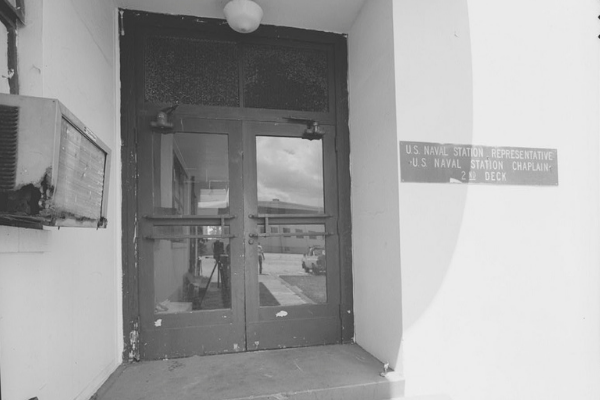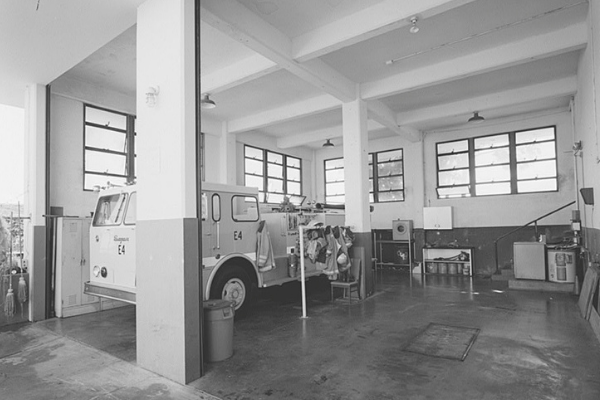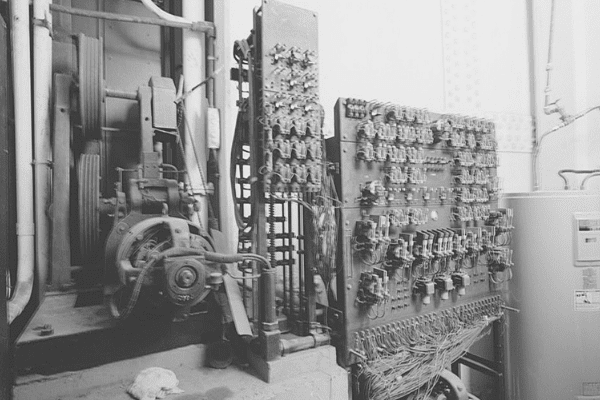Ready Room Blog
4/20/22
History of Ford Island Control Tower
The Ford Island Control Tower at Pearl Harbor Aviation Museum bore witness to the attack on Pearl Harbor, looking over the Ford Island aviation battlefield that fateful morning.
Still standing tall today, the Ford Island Operations Building and Control Tower honor and remember December 7, 1941, serving as an iconic symbol of America’s strength, sacrifice, and resilience during World War II.
The Ford Island Operations Building (S84) was to consist of a garage, operations and administrative offices, barracks, an aerological tower, water tank, and an aircraft control tower.

UNDER CONSTRUCTION DURING ATTACK ON PEARL HARBOR
Early on the morning of Sunday, December 7, 1941, a Japanese strike force launched a surprise attack on the Hawaiian Islands, including Ford Island Naval Air Station in Pearl Harbor. In less than two hours, four battleships moored around the island lay at the bottom of the harbor, most of the aircraft staged on the island’s airstrip and surrounding structures were either damaged or destroyed, and 2,335 U.S. military members lost their lives.
Like many structures on Ford Island, Building S84 was still new at the time of the attack, with only 80% of the aircraft control tower complete. Because the upper control tower was not complete, the aerological tower on top of Building S84 was temporarily used as a control tower to direct aircraft. The Operations Building S-84 was strafed during the attack while controllers continued to guide U.S. aircraft in and out of the Ford Island airstrip. Construction scaffolding surrounded the tall water tank and low-flying attackers (reported as low as 40 feet) were forced to veer away from the looming structure. Operators on the lower control deck guided the the USS Enterprise SBD Dauntless scout planes as they arrived in the middle of the attack.
When the smoke cleared Ford Island, the partially built Ford Island Operations Building (S84) and its control tower were still standing tall, an iconic symbol of America’s strength, sacrifice, and resilience.
Control Tower Completed


On May 1, 1942, five months after the attack, the upper control tower was finished.
Although construction on the tower was complete, the tower was still painted with a solid dark primer. It is unknown when the control tower was given its color, but by November 1942 the tower was painted with a three-tone light gray, medium gray, and dark gray camouflage. This color scheme remained on the structure throughout the building’s continued use during World War II and well into the 1950s. The tower received its orange and white stripes in the early 1960s.
S84 AFTER WORLD WAR II


After World War II, the operations building continued to be used for a variety of needs including a fire station, chapel, and training facility.
In 1970, the first floor of S84 was converted into a fire station, which remained in use until the 1990s.
The second floor was divided in sections, with the half closest to Hangar 37 being converted into a chapel as the U.S. Naval Station Chaplain until 1988. The northern section of the second floor was used as a training facility and offices for the Naval Station Police Department, with the last section used as a storage area.
In 1970, the aerological tower was converted into a control deck operated by the Hawaii State Department of Transportation for civilian touch-and-go practice. Civilian operations ended in 1999 when a civilian airport was opened in the place of the former naval air station at Barbers Point.
Historic Look Inside
Building S84 was built as a T-shaped building with reinforced concrete and a steel-framed structure. The front portion is a two-story building with a 16-foot steel framed aerological tower situated on its rooftop, and the adjoining portion being a 156-foot steel water tank with an air control tower constructed above.
Operations Building
The two-story building includes operations and administrative offices, barracks, and a garage. The lower control tower on the roof of Building S84 was created as an aerological tower for wind direction and weather forecasting. However, until the upper control tower was built, it doubled as an interim control tower for wheeled aircraft using the runway.

Control Tower
The 156-foot steel tower contains a large water tank, now empty, and an air control tower.
Contrary to some rumors, the water tank inside the control tower was never used for submarine training. There is a much smaller 100-foot-tall dive tower across the east lock of Pearl Harbor in the middle of the submarine base.
Elevator
To provide additional access to the upper levels of the operations building and control tower, Otis Elevators started the installation and construction of the Ford Island Naval Air Station control tower elevator on November 15, 1941. The elevator shaft was completed in late March or April of 1941, and was under construction at the time of attack.


Restoration and Renovation
Over the past 10 years, the Ford Island Control Tower has undergone an amazing restoration and renovation on the Operations Building, aerological tower, and the Ford Island Control Tower. The Museum thanks U-Haul International and many other generous donors for their support of this project. Pearl Harbor Aviation Museum will soon open S84, opening this iconic and historic landmark to the public.
Stay tuned for a feature on the amazing restoration and renovation of this iconic and historic site.
